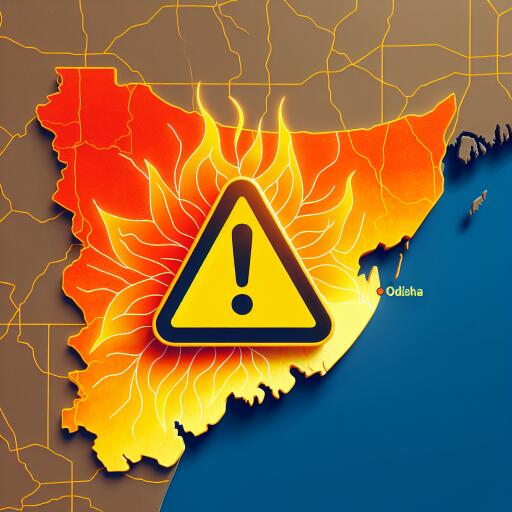
Odisha Braces for Intense Heat Wave Conditions: IMD Issues Alert
In the coming days, Odisha is set to experience a significant rise in temperatures, with forecasts indicating an increase of 6 to 8 degrees Celsius, as reported by the India Meteorological Department (IMD). This heat surge is expected to envelop several regions across the state, pushing daytime temperatures beyond the 40-degree Celsius mark in the ensuing days.
The IMD’s Regional Meteorological Centre in Bhubaneswar has highlighted an impending phase of sweltering heat. According to their projections, a widespread escalation in temperatures is on the horizon for Odisha, heralding a period of hot and humid weather conditions that will predominantly affect the state starting April 17.
The weather bureau has sounded a Yellow Warning, signaling the onset of potentially hazardous heat and humidity levels. Areas including Bolangir, Sambalpur, Titlagarh, Jharsuguda, and Sonepur are among those predicted to bear the brunt of this scorching spell, with temperature forecasts soaring to a scalding 43 degrees Celsius in these locales.
IMD experts have pointed out that coastal districts are not spared from the heat onslaught. Regions such as Bhadrak, Balasore, Jajpur, Kendrapara, Jagatsinghpur, Cuttack, Khordha, Nayagarh, Ganjam, Gajapati, and Puri are poised to confront severe heat and humidity conditions beginning April 14. Furthermore, a significant portion of Odisha is anticipated to record temperatures in excess of 40 degrees Celsius between April 15 and 16.
With the western parts of the state, including Bolangir, Sambalpur, Titlagarh, Jharsuguda, and Sonepur, expected to experience the highest temperature peaks of over 43 degrees Celsius from April 17, residents and authorities are on high alert. The Yellow Warning serves as a prelude to these extreme conditions, advising caution and preparation for the days ahead.
In addition to the general alert, the IMD has also declared a heat wave warning for several districts on April 15 and 16, underscoring the urgency of the situation. The heightened temperatures not only pose direct health risks but also contribute to an increased demand for electricity, water shortages, and the potential for wildfires, amplifying the challenge for local communities and governance structures to mitigate the impacts effectively.
As Odisha girds itself for the impending heat wave, authorities and residents alike are urged to take necessary precautions. Staying hydrated, avoiding outdoor activities during peak heat hours, and adhering to health advisory updates are crucial measures to combat the adverse effects of the heat wave. The state’s readiness to face these extreme weather conditions will be pivotal in safeguarding public health and ensuring the well-being of its communities in the face of rising temperatures.





Leave a Reply